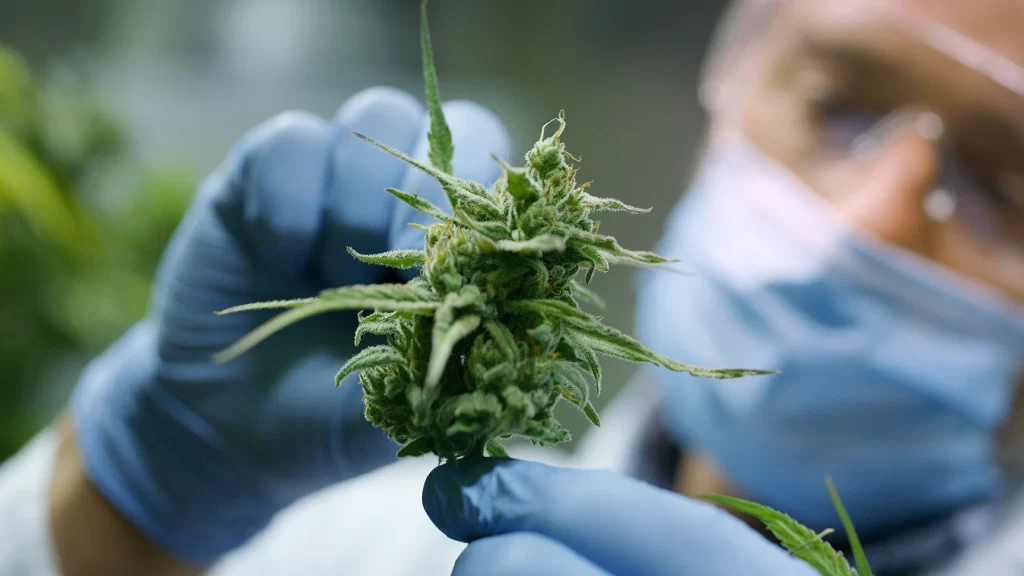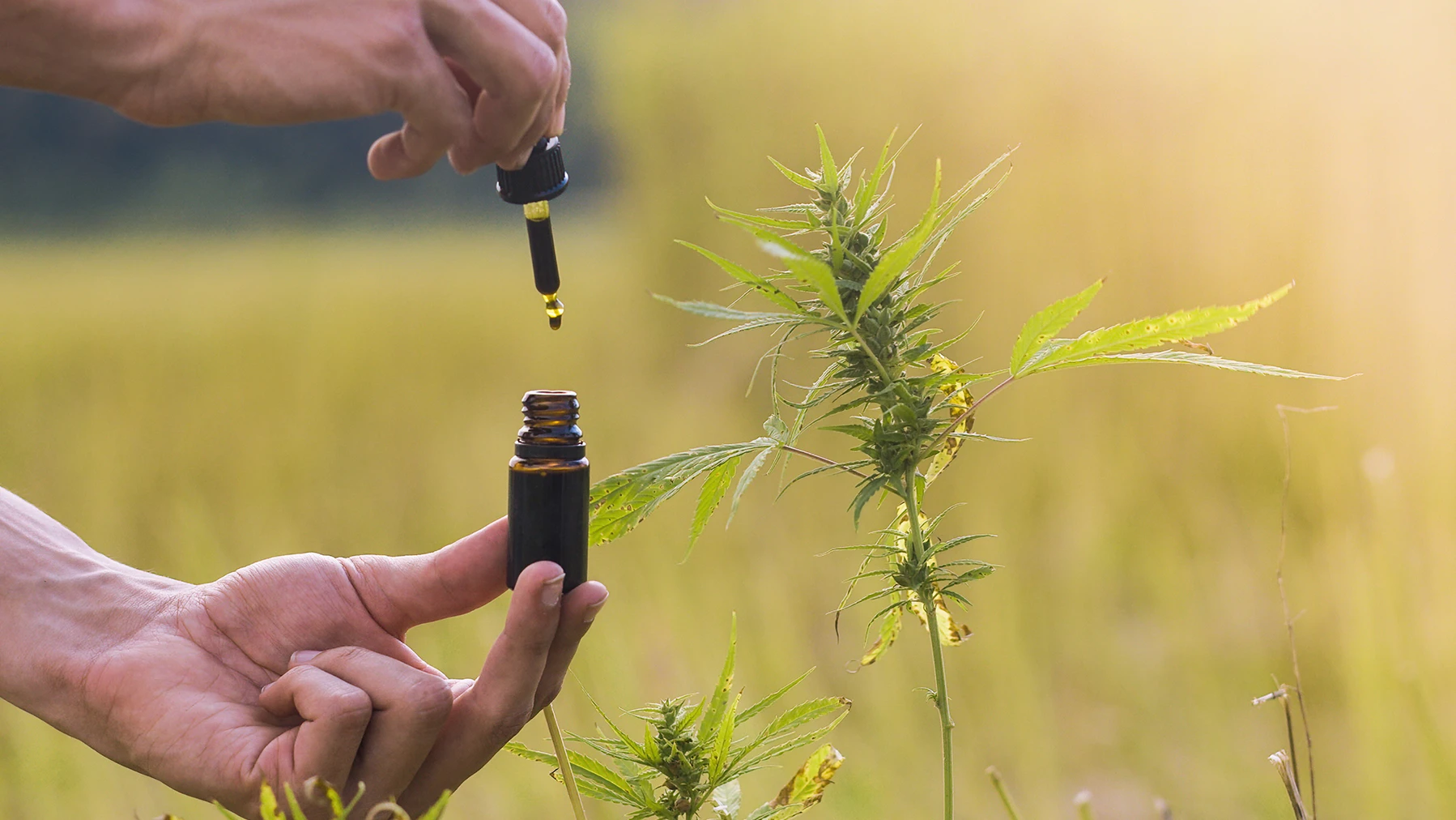The cannabis plant is complex with a variety of components that influence the multifaceted therapeutic effects it can have on someone. The different components and compounds can make it difficult to navigate. This blog will explain the different chemical components of cannabis and what makes the plant so unique from a health and scientific point of view. We’ll also discuss how these compounds interact with our endocannabinoid system to result in such varied effects on individuals to treat various ailments.

The cannabis plant belongs to the Cannabaceae family, also known as the Hemp family. Cannabis has been used for thousands of years for both medical and recreational purposes. The plant itself contains over 400 molecules, 150 of which are cannabinoids. Aside from cannabinoids though, there are components called terpenes and flavonoids which can have an impact on the experience and therapeutic effect of the plant.
The endocannabinoid system
Cannabinoids are a key component to the cannabis plant, contributing to the effects an individual experiences when the drug is ingested. When a cannabinoid is ingested and enters the human body, it interacts with the endocannabinoid system.
The endocannabinoid system or ECS is a complex cell-signalling system that helps regulate a range of body functions. It was only discovered in the 1990s when researchers were exploring THC. Though scientists haven’t fully understood the ECS yet, we know it plays a role in regulating a range of functions and processes including: sleep, mood, appetite, pain sensation, memory, reproduction and fertility. The ECS comprises three core components:
There are three core components that make up the endocannabinoid system: endocannabinoids, receptors and enzymes.
- Endocannabinoids: Naturally produced molecules similar to cannabinoids found in cannabis. The two primary endocannabinoids are anandamide (AEA) and 2-arachidonoylglycerol (2-AG).
- Receptors: These are found throughout the body and are responsible for transmitting the effects of endocannabinoids. The two main types of receptors are CB1, predominantly located in the central nervous system, and CB2, primarily found in the peripheral nervous system and immune cells.
- Enzymes: These break down endocannabinoids once they have fulfilled their function. The two key enzymes are fatty acid amide hydrolase (FAAH), which breaks down AEA, and monoacylglycerol lipase (MAGL), which degrades 2-AG.
Cannabinoids
Cannabinoids are the primary active compounds in cannabis. Over 100 different cannabinoids have been identified in cannabis, but the most studied and well-known are tetrahydrocannabinol (THC) and cannabidiol (CBD).
- THC (Tetrahydrocannabinol): This is the main psychoactive component of cannabis, responsible for the “high” associated with its use. THC works by binding to CB1 receptors in the brain, influencing various mental and physical functions, such as perception, mood, and appetite.
- CBD (Cannabidiol): Unlike THC, CBD is non-psychoactive, meaning it does not produce a high. CBD has garnered significant interest for its potential therapeutic effects, including anti-inflammatory, analgesic, anti-anxiety, and anti-seizure properties. CBD interacts more subtly with the ECS, influencing the receptors indirectly and also impacting non-cannabinoid receptors and various ion channels in the body.
Terpenes
Terpenes are aromatic compounds found in many plants, including cannabis but also most plant products and fruits, creating distinct aromas such as citrus and pepper. This component is responsible for the plant’s distinctive scent and flavour profile. This is one of the factors that play a key role in differentiating various cannabis strains. Emerging research demonstrates that terpenes may play a role in shaping the therapeutic benefits of cannabis.

More than 200 terpenes have been identified in cannabis, with some of the most common being:
- Myrcene: Known for its earthy, musky scent, myrcene is believed to have sedative effects and enhance the psychoactive effects of THC.
- Limonene: This terpene has a citrusy aroma and is thought to elevate mood and relieve stress.
- Linalool: With a floral scent, linalool is associated with relaxation and anti-anxiety properties.
- Pinene: Smelling of pine, pinene is suggested to have anti-inflammatory effects and may help improve memory and alertness.
Flavonoids
Much like terpenes, flavonoids are present in most plants. This component is responsible for the flavouring and pigmentation of the plant, and also helps to protect it from UV rays and environmental threats. Three of the main flavonoids in cannabis are cannaflavin A, B and C.
Flavonoids also have some therapeutic benefits. They have antioxidant and anti-inflammatory properties, and research suggests they may help to improve cardiovascular function and protect against diabetes, cancer and other conditions. Therefore, flavonoids may assist cannabis in its therapeutic action.
Interaction of cannabinoids and terpenes with the endocannabinoid system
The interaction between cannabinoids, terpenes, and the ECS is intricate. This interplay is often referred to as the “entourage effect,” a term coined to describe how the various compounds in cannabis work together to produce a greater effect than any single compound alone.
- Cannabinoids and Receptor Binding: THC binds directly to CB1 receptors, while CBD has a more complex interaction. CBD modulates the receptor’s signalling, potentially enhancing the effects of endocannabinoids or other cannabinoids. This modulation can help mitigate some of the psychoactive effects of THC, making CBD-rich strains appealing for therapeutic use.
- Terpenes and Modulation: Terpenes can influence how cannabinoids bind to the receptors. For instance, myrcene may increase cell permeability, allowing cannabinoids to be absorbed more effectively. Limonene can elevate serotonin levels, which may help explain its mood-lifting properties.
- Synergistic Effects: The entourage effect highlights the potential for cannabinoids and terpenes to enhance each other’s therapeutic benefits. For example, combining THC with CBD can reduce the anxiety-provoking effects of THC while maintaining its pain-relieving properties. Similarly, certain terpenes may amplify the anti-inflammatory effects of cannabinoids.
The therapeutic potential of cannabis
The synergistic relationship between cannabinoids and terpenes offers significant therapeutic potential. Research is ongoing, but current studies suggest that the combination of these compounds can be effective in treating a variety of conditions, such as:
- Chronic Pain: THC and CBD, along with terpenes like myrcene, may work together to reduce pain and inflammation.
- Anxiety and Depression: CBD, combined with mood-enhancing terpenes like limonene, can help alleviate symptoms of anxiety and depression.
- Epilepsy: CBD has shown promise in reducing the frequency and severity of seizures, and its effects can be complemented by specific terpenes.
- Sleep Disorders: The sedative properties of myrcene and linalool, combined with cannabinoids, can help improve sleep quality.
Interested in learning more about cannabinoid science? How Plantific can help
Cannabinoids and terpenes play a fundamental role in the science of cannabis. Their interaction with the endocannabinoid system underscores the complexity and potential of cannabis as a therapeutic agent. As research continues to unravel the mysteries of these compounds and their synergistic effects, the future of cannabis-based medicine looks promising, offering hope for more effective and personalised treatments.
Our introductory course to the cannabis industry provides a comprehensive and detailed learning experience with extensive listing of the required research areas to be briefed on the past, current and future aspects of the international legal medical cannabis industry.
By the end of the course, you will have the necessary knowledge to:
- Understand the fundamental traits of cannabis and recognise the various components of the plant
- Grasp the process of cultivating cannabis and manufacturing cannabis-based products
- Differentiate between cannabinoid-rich products and non-cannabinoid rich ones like industrial hemp, as well as between the psychotropic component THC and non-psychotropic ones like CBD
- Discern how cannabis products are tested to comply with international standards
- Understand how the cannabis engages with critical systems in the human body
- Determine what the current body of scientific evidence says about the effectiveness treating medical conditions with cannabis
- Recognise the adverse effects and other risks of cannabis use
- Comprehend the current leading regulatory frameworks governing medical and recreational cannabis use, including pilot programmes
- Appreciate the historical and cultural significance of cannabis, as well as the development of policy debates and regulations surrounding its use.
- Formulate a panorama of the cannabis industry and the different sectors within it
If you are interested in learning more, explore the various courses we offer.


